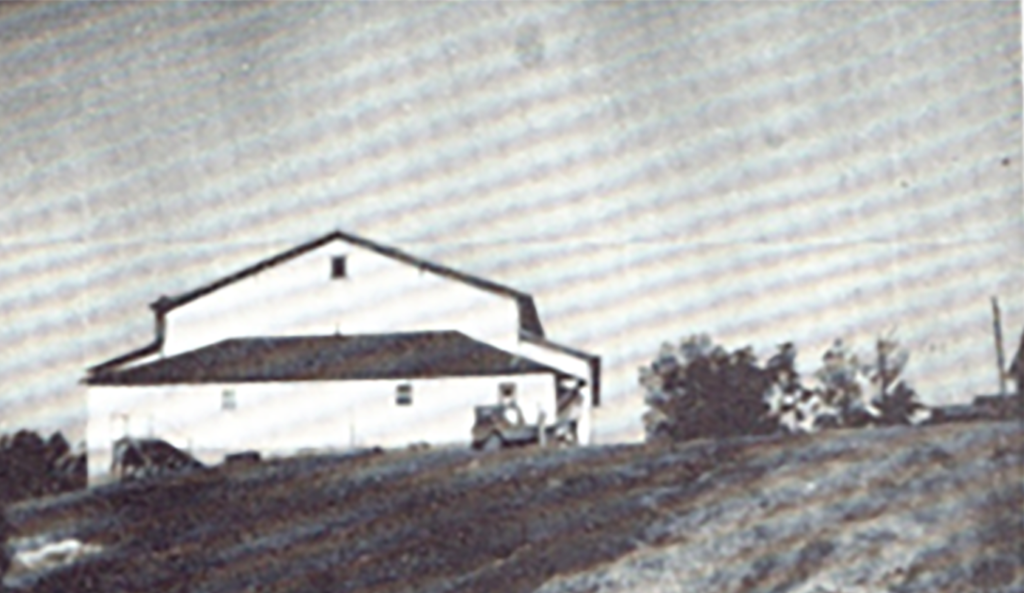It is hard to imagine today, but the economy of Sugar Hill and Gwinnett County in the late 1800s and early 1900s was dominated by agriculture. Our agricultural past as a community is most evident in the lack of old growth trees in the area. Secondary growth forested areas, even along the Chattahoochee River, are prevalent because of the clear-cutting associated with past farming activity. There is even evidence of terracing on National Park Service property just below Buford Dam and behind the Sugar Hill Golf Course. The Sugar Hill of yesterday is a lot different from the Sugar Hill of today.
If we could go back in time to the 1930s and drive down the then dirt road that is now Level Creek Road, you would notice fields cleared for cotton and other agricultural activities. A 1939 aerial photo taken from an airplane is a stark reminder that much of Sugar Hill in our early history was cleared for agricultural purposes. Some of Sugar Hill’s early founders, like the Buice and Sudderth families, owned large farms in the area. Glad Sudderth’s father ran a 100-acre farm in the area near where the Publix on Cumming Highway exists today. The Sudderth family grew corn and cotton, as well as other commodities. Louis Grizzle, in a 2014 interview for Sugar Hill’s 75th anniversary, reflected on his father’s 30-acres of land that were used to grow corn, which was taken and milled into flour. Agricultural activities in the Sugar Hill community, without a doubt, helped feed local families and this region of Georgia.
Most families in Sugar Hill, even on a small scale, had their own gardens and grew their own fruits and vegetables. The food grown in home gardens was sometimes used to add to the food they might purchase at a local grocery store. In many instances, growing additional food in a home garden was a necessity. It was not uncommon for neighbors to also trade food items, like eggs for milk or even cheese. My grandparents, great-aunts and great uncles who lived in various parts of the north Georgia mountains all canned food items in glass jars that could be stored in cool cellars throughout the year and long past the growing season. Residents of Sugar Hill preserved everything from green beans to apples, as well as jams and jellies made from fruits like muscadines, pears and figs. In some instances, the canning in glass jars would take place at home, but many others would take their harvested fruits and vegetables to a local cannery to preserve the food in steel cans.
Sugar Hill, in the past, had two canneries. In the early 1900s, there was a peach cannery. In the early 1940s, another cannery opened in the community that canned vegetables for residents of Sugar Hill until it closed in the late 1950s. In a 1949 aerial photo of Sugar Hill, the second cannery is clearly visible in the area where Church Street and Level Creek Road now meet at a three-way stop sign. Residents of that time would pick and clean their fruits and vegetables, like peaches and green beans, before taking them to the cannery to be canned. The cannery would charge a minimum amount to put the fruits and vegetables into steel cans. The cans would be heated to kill bacteria and sealed, which would help preserve the fruits and vegetables beyond the normal shelf life at a produce stand. The cannery was only open to the public several days a week and, often, was in such high demand that there was a long wait.
It is not hard to imagine that residents of Sugar Hill would take the time to talk to and socialize with their neighbors who were also waiting at the Sugar Hill Cannery, while forming strong memories of the cannery and the role it played in shaping our community. Community was built through the common need to harvest and preserve fruits and vegetables.
Brandon Hembree is mayor of Sugar Hill. He is a 20-year resident of the city, and he uses his interest in history to detail Sugar Hill’s rich past.
FEATURED PHOTO: The Sugar Hill Cannery. Photo courtesy of Brandon Hembree.

